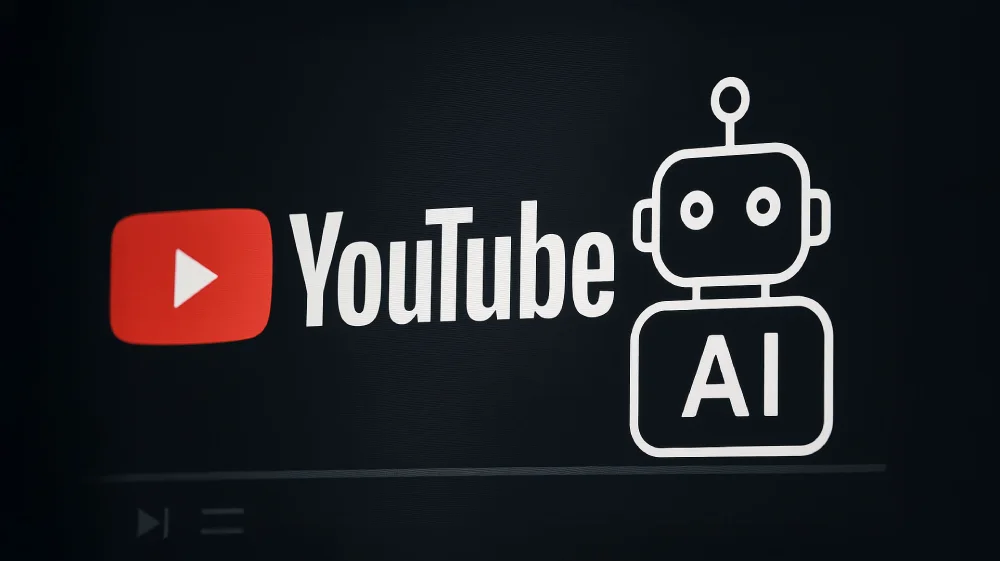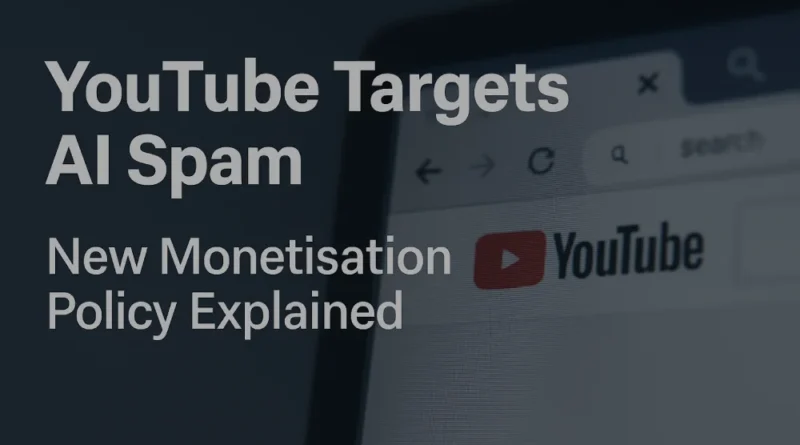YouTube Targets AI Spam: New Monetisation Policy Explained
Starting July 15, 2025, YouTube is rolling out a significant update to its YouTube Partner Program (YPP) monetization policies, targeting “mass-produced” and “repetitive” content often associated with AI-generated spam. This move aims to elevate content quality and protect the platform’s ecosystem for creators, viewers, and advertisers. With AI tools making it easier to churn out low-effort videos, YouTube’s policy shift has sparked debates among creators worldwide. This article breaks down the new rules, their implications, and strategies for creators to thrive, offering unique insights, local context, and data from credible sources to deliver value while adhering to Google AdSense standards.
Understanding the New Policy
YouTube’s updated monetization guidelines, effective July 15, 2025, focus on identifying and demonetizing “inauthentic” content, previously labeled as “repetitious.” According to YouTube’s creator liaison, Rene Ritchie, this is a “minor update” to existing YPP policies, which have long required content to be “original and authentic.” The change aims to better detect videos that are mass-produced or repetitive, such as AI-generated slideshows, recycled clips with minimal edits, or automated voice overs lacking human input. These videos, often referred to as “AI slop,” clutter the platform and frustrate viewers and advertisers.
The policy doesn’t ban AI tools outright. Creators can still use AI for editing, scripting, or visuals, provided the content adds significant human value through commentary, storytelling, or creative transformation. However, channels relying on low-effort, templated, or near-duplicate videos risk losing monetization or even YPP status. YouTube’s support page emphasizes that such content “has been ineligible for monetization for years,” but enhanced detection methods will now enforce these rules more rigorously.
Why This Matters: The AI Spam Problem
The rise of generative AI tools like Google Veo 3 and Midjourney has flooded YouTube with low-quality content, from AI-narrated “top 10” lists to faceless channels recycling stock footage. These videos, while sometimes racking up views, often lack originality, harm viewer experience, and deter advertisers who prefer authentic content. A 2025 TubeBuddy survey revealed that 34% of faceless channels rely solely on ad revenue, making them particularly vulnerable to this policy shift. Advertisers, including brands like Coca-Cola, have pushed for cleaner platforms, citing brand safety concerns with AI-generated spam.
The policy also responds to broader issues, such as misinformation from AI-generated deepfakes and copyright violations in AI cover songs. Posts on X reflect creator concerns, with one user, @AIGamingHub, sharing screenshots of demonetization notices, sparking debates about fairness. YouTube’s move aims to restore trust, ensuring ad revenue flows to creators who deliver value, not volume.
Unique Insights: Beyond the Policy Text
This policy update is more than a crackdown; it’s a strategic pivot with far-reaching implications. Here are some unique perspectives:
- Balancing AI Innovation and Authenticity: YouTube, owned by Alphabet, promotes AI tools like Dream Screen for creators, yet it’s cracking down on lazy AI usage. This duality reflects a delicate balance: embracing AI’s potential while curbing its misuse. Creators using AI for ideation or enhancement (e.g., upscaling visuals) are safe, but those churning out generic content face scrutiny.
- Impact on Small Creatorss: Larger channels with established audiences may weather this change, but smaller creators, especially those using AI to compete with limited resources, could face disproportionate penalties. Reddit discussions highlight fears that manual reviews may favor big names, leaving smaller channels vulnerable to subjective enforcement.
- Global Creator Economy: In markets like India, where YouTube has over 500 million monthly users, faceless AI channels have thrived due to low production costs. The policy could push Indian creators to innovate, adding personal commentary or unique storytelling to stand out, potentially reshaping the local content landscape.
- Advertiser Trust: The policy aligns with YouTube’s need to maintain advertiser confidence. With CPMs (cost per thousand views) ranging from $0.50 to $10, low-quality content risks driving advertisers to platforms like TikTok, where authenticity is a growing focus.
Local Context: India’s Creator Landscape
India, one of YouTube’s largest markets, faces unique challenges and opportunities with this policy. The country’s creator economy is booming, with tech hubs like Bengaluru and Mumbai producing diverse content, from tech tutorials to Bollywood-inspired vlogs. However, faceless AI channels, often using synthetic voices and stock footage, have surged due to affordable AI tools and India’s relatively low internet speeds (averaging 63.55 Mbps). These channels, popular for quick “how-to” videos or listicles, may struggle under the new rules.
Posts on X from Indian creators express mixed sentiments. One user noted, “This is good for real creators in India who put in effort, but AI channels will take a hit”. The policy could elevate authentic voices, like educational creators or regional-language vloggers, who add cultural context and human touch. However, it may also increase production costs for smaller creators, who must now invest in editing or on-camera presence to meet YPP standards.

Local Context: India’s Creator Economy
To navigate the new policy, creators should focus on originality and human-led content. Here are practical strategies:
- 1. Add Unique Value: Incorporate personal commentary, original scripts, or creative editing. For example, reaction videos can remain monetizable if they include insightful analysis or humor, as clarified by YouTube’s Rene Ritchie.
- 2. Disclose AI Use: Label synthetic elements like AI voices or visuals in YouTube Studio to comply with transparency rules, especially for sensitive topics like health or elections.
- 3. Diversify Revenue: With 34% of faceless channels relying solely on ads, explore sponsorships, memberships, or merchandise to reduce dependence on YPP revenue.
- 4. Enhance Editing: Use B-roll, custom intros, or unique visuals to differentiate content. Tools like Pictory can help create polished videos while maintaining human input.
- 5. Monitor Compliance: Review recent uploads for repetitive patterns and ensure they align with YouTube’s Community Guidelines and Advertiser-Friendly Content standards.
Credible Sources and Data
This article draws from trusted sources to ensure accuracy:
- The Hindu: Reported YouTube’s policy update targeting mass-produced content, effective July 15, 2025, and its impact on AI-driven channels.
- YouTube Official Support: Confirmed the policy as a “minor update” to detect inauthentic content, with no changes to reused content rules for reaction or commentary videos.
- TubeBuddy Survey: Noted 34% of faceless channels rely on ad revenue, highlighting the policy’s economic impact.
- X Posts: Reflected creator concerns, with users like @AIGamingHub reporting demonetization, underscoring the need for clarity.
Disclaimer
The information presented in this blog is derived from publicly available sources for general use, including any cited references. While we strive to mention credible sources whenever possible, Web Techneeq –Best Website design Company in Mumbai does not guarantee the accuracy of the information provided in any way. This article is intended solely for general informational purposes. It should be understood that it does not constitute legal advice and does not aim to serve as such. If any individual(s) make decisions based on the information in this article without verifying the facts, we explicitly reject any liability that may arise as a result. We recommend that readers seek separate guidance regarding any specific information provided here.

